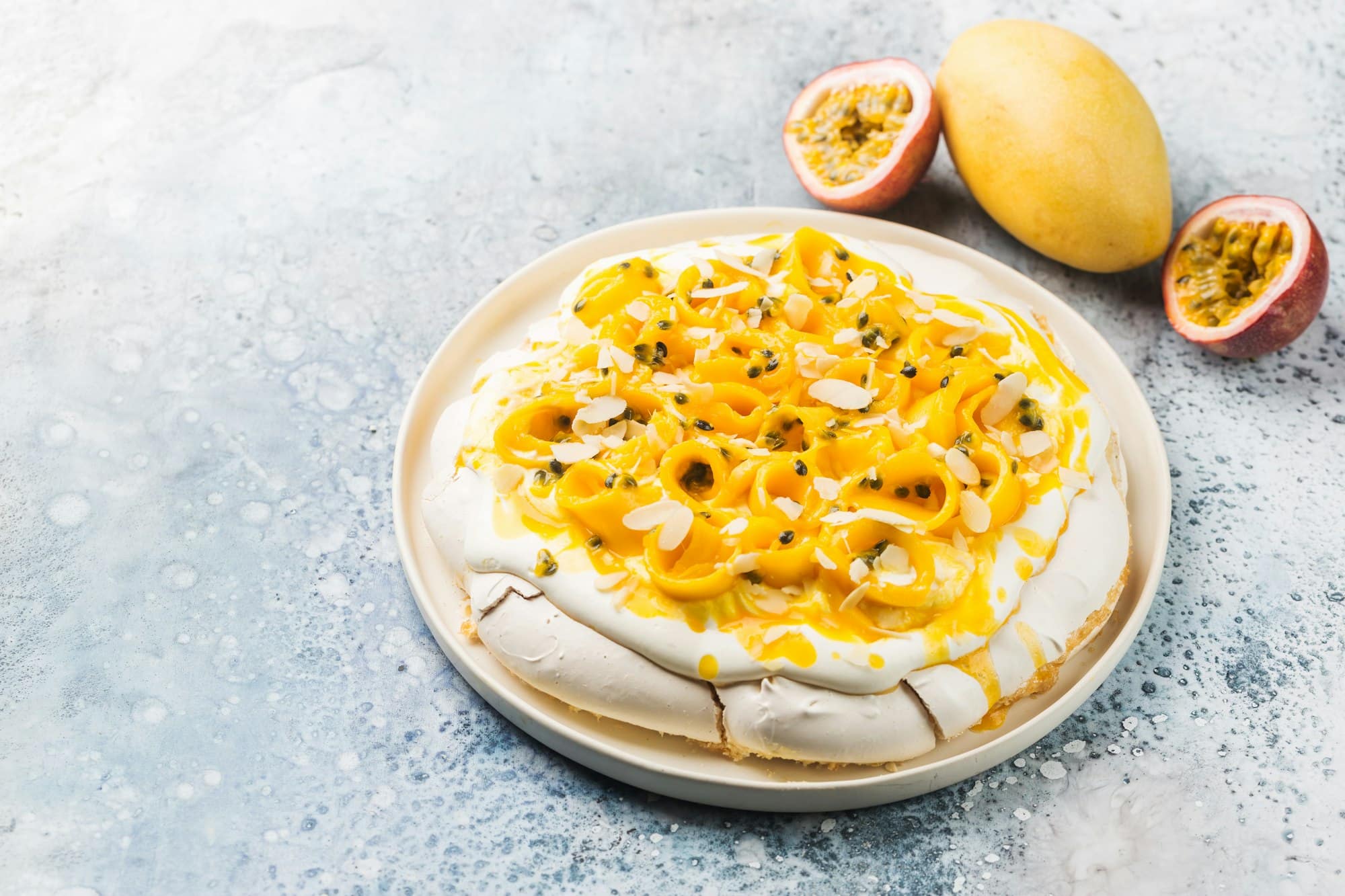Creating a stunning, show-stopping dessert is no simple task. But with the right recipe, anyone can whip up a pavlova that’ll have guests swooning. The pavlova is an iconic meringue-based dessert named after the Russian ballerina Anna Pavlova. It’s characterized by a crisp exterior shell and a soft, light inside. Topped with whipped cream and fresh fruit, it’s a dessert that’s as delightful to look at as it is to eat. The contrasting textures and flavors make it a favorite dessert worldwide.
In this article, you’ll learn how to create a beautiful pavlova using simple ingredients such as egg whites, sugar, and cream. Plus, you’ll master the technique of baking the perfect meringue. Let’s get started!
Have you seen this : What’s the best approach for a succulent Coq au Riesling with buttery spaetzle?
Crafting the Meringue: The Base of Your Pavlova
The meringue is an essential element of the pavlova. A well-made meringue provides the perfect base for your pavlova—crisp on the outside, soft and airy on the inside. The meringue base will hold all the delicious toppings that you’ll add later.
First, you’ll need to separate the egg whites from the yolks. This step is crucial as even a bit of yolk can prevent your egg whites from whipping up to a stiff peak. As for the sugar, granulated sugar is ideal but if you want a smoother texture, you can use superfine sugar.
Also read : How to Perfectly Poach a Haddock for a Traditional British Kedgeree?
Once you’ve got your egg whites and sugar, it’s time to start whipping. You’ll want to beat the egg whites until they form soft peaks. Then, gradually add the sugar while continuing to beat the eggs until they form stiff peaks. This process will usually take around 15 to 20 minutes.
Baking the Meringue: Perfecting The Crispness
After forming the meringue, the next challenge is baking it to the right consistency. The challenge here is to achieve a pavlova with a crisp crust and a soft, marshmallow-like center. This delicate balance is achieved by using a low oven temperature and a slow baking time.
Preheat your oven to a low temperature—around 275°F (135°C). The low temperature will allow the meringue to dry out slowly without burning. Place the meringue in your preheated oven and bake for about an hour.
Once the baking time is up, don’t be tempted to open the oven door right away. Instead, turn off the oven and let the meringue cool inside. This process prevents the outer shell from cracking, which commonly happens when the meringue is exposed to a sudden change in temperature.
Preparing the Whipped Cream: The Velvety Layer
For the filling, you will be using sweetened whipped cream. The cream adds a rich, velvety texture that contrasts with the crispness of the meringue. Whipping cream is easy, but it’s also easy to overbeat it, which can make it grainy and butter-like.
First, chill your cream in the refrigerator. Cold cream whips better and holds its shape longer. Then, beat the cream until it forms soft peaks. You can add powdered sugar and a little bit of vanilla to sweeten and flavor your whipped cream.
Remember to not overbeat your cream. Overbeaten cream will lose its smooth texture. Once your cream has reached the soft peak stage, it’s ready to be spread over your cooled meringue.
Selecting and Adding the Fruit Topping: The Crowning Jewel
The last step in creating your pavlova is to top it off with fresh fruit. The fruit adds a pop of color, a burst of flavor, and a juicy texture that contrasts beautifully with the dry meringue and the creamy whipped cream.
There’s no definitive rule for which fruits to use in a pavlova. You can choose any fruits that you like. However, some fruits work particularly well in a pavlova. Berries, such as strawberries, raspberries, and blueberries, are always a good choice. Citrus fruits, like lemon, are also wonderful, bringing a bit of tartness to balance the sweetness of the meringue and cream.
Aside from the type of fruit, you also need to consider the way you arrange them. The key to making a show-stopping pavlova is to be generous and creative with your fruit toppings. You can create a mound of mixed berries in the center, or make a pattern with sliced fruits.
Crafting the Perfect Lemon Syrup: An Optional But Worthwhile Addition
To enhance the flavors and add another layer of sweetness, consider making a simple lemon syrup to drizzle over your pavlova. This optional step can make your pavlova go from great to simply unforgettable.
To make the syrup, combine sugar and lemon juice in a saucepan and simmer until the sugar has completely dissolved. Allow the syrup to cool before drizzling it over your pavlova. The syrup will seep into the meringue and the whipped cream, intensifying the flavors and adding a refreshing lemony note.
Setting the Pavlova: Cooling and Assembly
Having baked your meringue to perfection and whipped your cream to a velvety consistency, it’s essential to let your creation set properly before adding the toppings. This step ensures that your pavlova remains crisp and does not become soggy under the weight of the toppings.
Start by carefully transferring your cooled meringue from the oven to a serving plate. Do this by lifting the edges of the parchment paper, trying not to disturb the meringue too much. You want to maintain its lightly crisp exterior and marshmallow center.
Next, spread your whipped cream over the meringue. Don’t be stingy – this is not the time for dieting! The billowy cream should cover the top of the meringue completely, creating a soft, velvety layer that will contrast beautifully with the crisp meringue.
If you’ve prepared a lemon syrup, now is the time to drizzle it over the cream. The syrup will soak into the cream and meringue, adding an extra layer of flavor. Now is also the time to add your lemon curd if you’re using it. This tangy addition will balance the sweetness of your pavlova and complement the fruit toppings.
Conclusion: Savoring the Result of Your Labor
After hours of careful preparation and baking, it’s finally time to enjoy your show-stopping dessert. The final pavlova should be a beautiful contrast of textures and flavors, with the crisp meringue, the velvety whipped cream, and the sweet and tangy fruit toppings.
Serving your pavlova is an event in itself. Cut into it with a sharp knife, revealing the soft, airy interior of the meringue, the creamy whipped cream, and the colorful fruit arrangement. Each slice should be a riot of colors, textures, and flavors.
Remember, the key to a great pavlova is in the details – the smoothness of the whipped cream, the crunch of the meringue, and the freshness of the fruit. Practice makes perfect, so don’t be discouraged if your first few attempts don’t turn out as expected. Keep trying, and soon you’ll be creating pavlovas that look as good as they taste.
This pavlova recipe transcends the seasons, making it a suitable dessert for occasions from January to December. Whether you’re celebrating a summer birthday with a pavlova topped with seasonal berries or ringing in the New Year with a decadent pavlova with lemon curd and tropical fruits, the options are endless.
In baking a pavlova, always remember to be patient and gentle. This meringue-based dessert is delicate, and rushing through the steps can result in a less than perfect outcome. So take your time, enjoy the process, and delight in the satisfaction of creating a dessert that’s as pleasing to the eye as it is to the palate.






